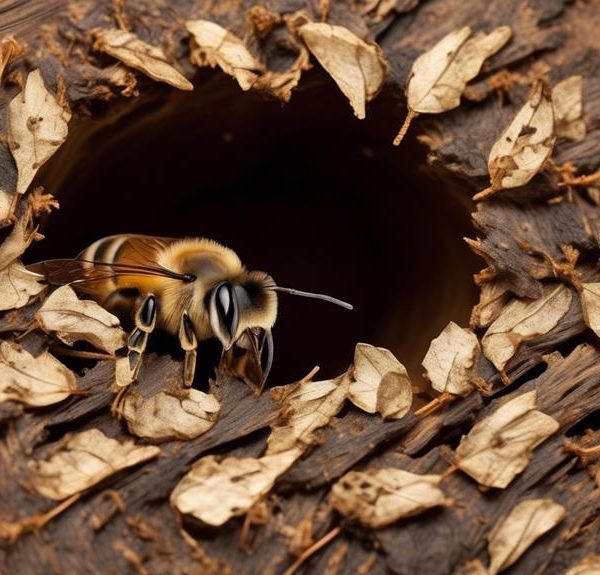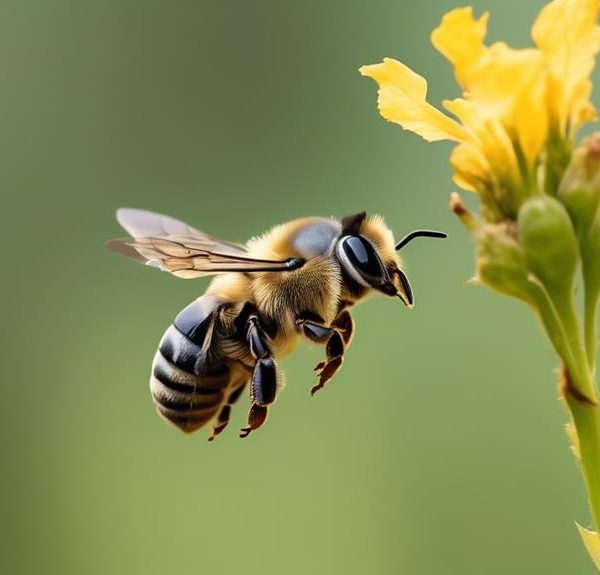Observe the intricate world of rose leaf cutter bees and discover eco-friendly ways to control their leaf cutting, without disrupting your garden's balance.
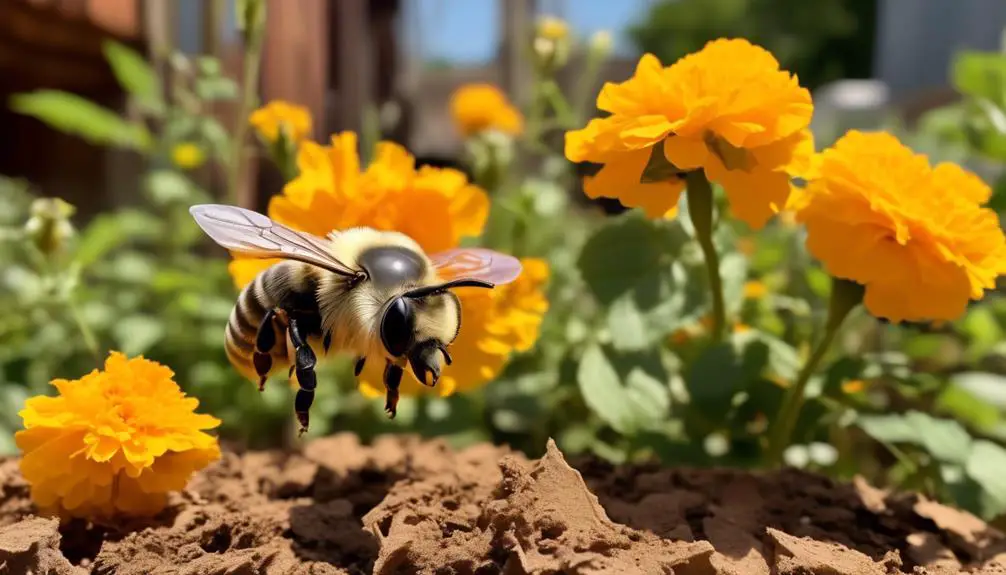
Rose Leaf Cutter Bee Control
Have you ever wondered, as you admire your flourishing rose garden, who's responsible for the circular cutouts in the leaves? It's none other than the rose leaf cutter bee, a creature you might not be too familiar with.
These solitary bees are generally harmless to humans, but their leaf cutting activities can leave your roses looking less than picture-perfect. As you navigate the world of garden pests, you'll find that controlling these bees isn't as straightforward as it may seem.
Not only are they vital pollinators, but many common control methods can unintentionally harm other beneficial insects. So, how can you keep your roses looking pristine without upsetting your garden's delicate ecosystem?
Let's explore this together.
Key Takeaways
- Rose leaf cutter bees are solitary creatures that create their own nests and fill them with pollen and nectar for their offspring.
- Leaf cutter bees cause cosmetic damage by cutting distinct circular sections along the edges of leaves, resembling hole puncher marks.
- Natural predators like wasps, beetles, and birds help control the population of leaf cutter bees and maintain a balanced ecosystem.
- Eco-friendly control methods include using bee-friendly insecticides, physical barriers like row covers or plant nets, providing alternative nesting sites, and maintaining a diverse garden to discourage leaf cutter bees.
Understanding Rose Leaf Cutter Bees

Before you can effectively manage rose leaf cutter bees, it's crucial to understand their behavior, lifecycle, and the role they play in your garden's ecosystem.
These bees are solitary creatures, meaning they don't live in colonies like honeybees. Instead, each female works independently to create her nest, which she fills with pollen and nectar as food for her offspring.
The lifecycle of a rose leaf cutter bee is fascinating. After mating, the female cuts circular sections from leaves, often your rose bush leaves, and uses them to construct her nest. Each nest contains several cells, each of which houses a single egg and its food supply. Once the eggs hatch, the larvae consume the stored food before entering a pupal stage, emerging as adults the following spring.
Rose leaf cutter bees are vital pollinators in your garden. As they collect pollen and nectar, they inadvertently transfer pollen grains from one flower to another, aiding in the fertilization process. This leads to the production of seeds and fruit, promoting biodiversity and contributing to a healthy ecosystem.
As such, it's important to manage, not eradicate, these bees.
Identifying Leaf Cutter Bee Damage

While appreciating the role of rose leaf cutter bees in your garden ecosystem, it's equally important to recognize the signs of their activity. Discerning bee damage from other pest damage is crucial to maintaining your roses' health.
Leaf cutter bees leave distinct, circular cut-outs along the edges of the leaves. Unlike other pests that might chew holes in the middle, leaf cutter bees create clean, almost perfect, semi-circular or circular cuts, as though made with a hole puncher. This precision cutting is one of the primary tell-tale signs of leaf cutter bees.
The damage is usually purely cosmetic and doesn't significantly harm the plant. However, it can become extensive if the bee population is left unchecked. The bees use the leaf pieces to build their nests, so if you notice these unique cut-out patterns, it's highly likely you have leaf cutter bees in your garden.
Natural Predators of Leaf Cutter Bees
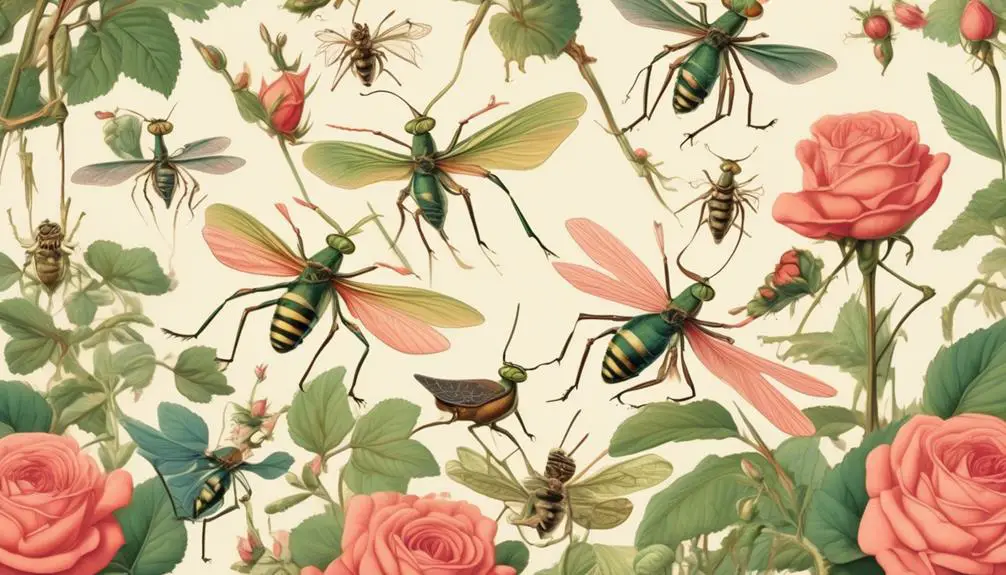
Turning our attention to the natural predators of leaf cutter bees, it's crucial to understand that these bees are preyed upon by a variety of insects and birds that help control their population. These predators play a significant role in the ecosystem by limiting the number of leaf cutter bees, thereby preventing an overpopulation that could potentially damage more plants in your garden.
Among the most common predators, you'll find insects such as wasps and beetles, and birds like the honey buzzard. Wasps are particularly interesting as they hunt and paralyze the bees, later using them as food for their larvae.
Below is a table that shows some common predators and their methods of predation:
Predator | Method of Predation |
|---|---|
Wasps | Paralyzing and using as food for larvae |
Beetles | Invading nests and consuming eggs, larvae, and food stores |
Honey Buzzards | Hunting adult bees for food |
Eco-friendly Control Methods
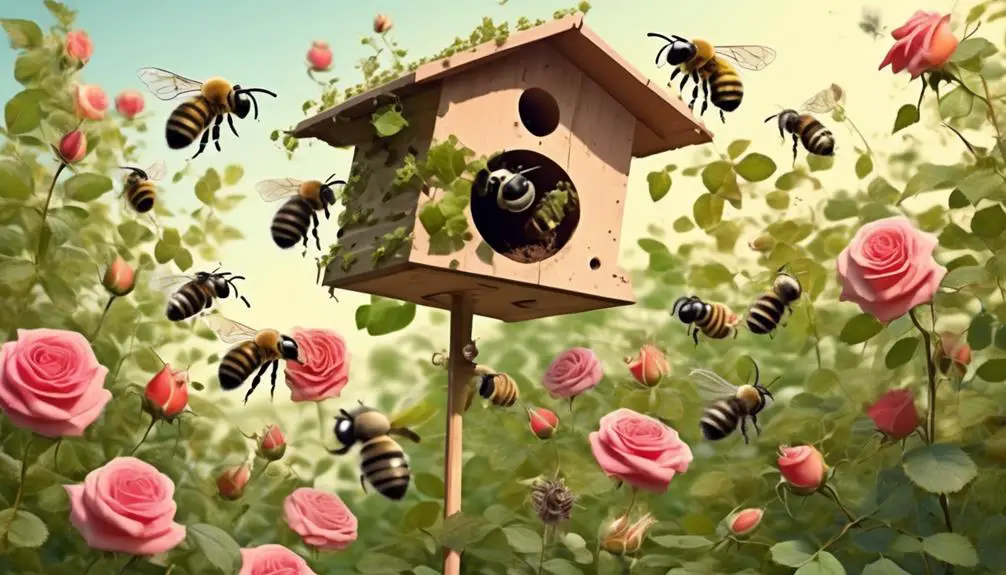
Moving beyond natural predators, you can also adopt eco-friendly control methods to manage the population of leaf cutter bees in your garden. These methods not only minimize damage to your roses but also maintain a balanced ecosystem.
One such method is the use of bee-friendly insecticides. These insecticides, often derived from natural sources like chrysanthemum flowers, target harmful pests without affecting beneficial insects like bees.
You could also use row covers or plant nets to protect your roses. These covers physically block bees from reaching the leaves, thus reducing damage.
Another strategy is to provide alternative nesting sites for leaf cutter bees. A simple wooden block with small holes drilled into it can attract these bees, diverting them from your roses. Maintaining a healthy, diverse garden with a variety of plants can also deter leaf cutter bees from focusing solely on your roses.
Lastly, remember to regularly prune your roses. This helps to remove damaged leaves and promotes healthy growth, making your roses less attractive to leaf cutter bees.
While these methods require some effort, they're worth it to protect your garden in an eco-friendly manner.
Maintaining Healthy Rose Gardens

In managing your rose gardens, it's crucial to prioritize the health of your plants, as a robust garden can naturally deter pests such as leaf cutter bees. Healthy plants produce natural deterrents, reducing the appeal for pests. Regular watering, careful pruning, and the application of suitable fertilizers are key to maintaining plant health.
Paying close attention to the condition of your roses can help spot early signs of infestation. These signs include irregularly shaped holes in your rose leaves or roses with missing petals. Here's a quick reference guide to rose garden care:
Rose Garden Care | Description |
|---|---|
Watering | Hydration is vital. Water your roses deeply but infrequently to promote deep root growth. |
Pruning | Regular pruning enhances sunlight penetration and air circulation, reducing chances of fungal infections. |
Fertilizing | Use a balanced rose food fertilizer, rich in nitrogen, phosphorus, and potassium for overall plant health. |
Monitoring | Keep an eye out for signs of pests or diseases. Early detection allows prompt action. |
Conclusion
In conclusion, you've learned that rose leaf cutter bees can pose a challenge to your roses. You can identify their damage and use their natural predators as a control method.
Eco-friendly solutions can be effective and safer for your garden ecosystem. Healthy roses are less susceptible to damage.
Stay proactive, maintain your roses well, and remember, knowledge is power in controlling these bees.

